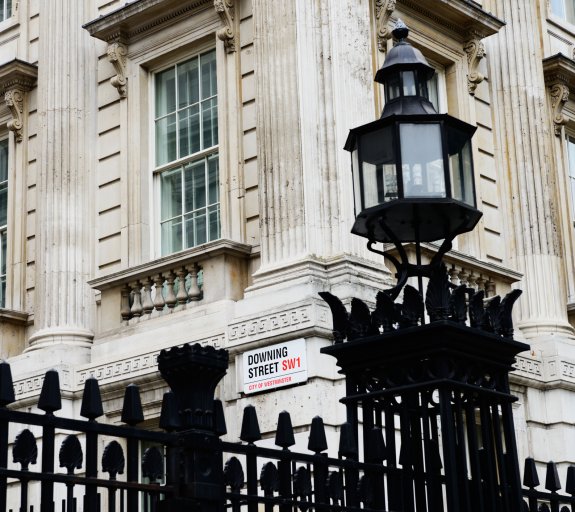
UK Election Watch: Election announcement from Drowning Street
The what
Prime Minister Rishi Sunak surprised even the keenest political watchers this week by getting out in the rain and announcing the next UK General Election on July 4th, far earlier than the expected October/November date. Parliament will now be dissolved on 30th May, once parliamentary business has been washed through and then the campaign will really get underway.
The why
One of the big questions is why now? The short answer is things are unlikely to get much better. On the economic front, Sunak likely was buoyed by the chunky 0.6% quarter-on-quarter rise in GDP in Q1 and the drop in inflation back to 2.3% - close to the MPC’s 2% target - in April. Two of his five main pledges were to halve inflation and boost growth, so these are clearly big wins in his eyes. A sense that the economic headlines were unlikely to remain this supportive, alongside a fading prospect of delivering another tax cutting fiscal event – in the face of IMF warnings and the increase public liability to settle the blood infection scandal – likely added to a sense that things would not improve much from here. Sunak probably also felt that calling a snap election would catch opponents off guard – this was not necessarily the Labour Party, that have been prepared for some time, but the Reform party, helping the Tories maintain more of the vote to the Right. Nigel Farage has since confirmed he won’t be standing, a blow for the party.
The polls
A lot can happen over a campaign period - manifesto releases and pressured debates to name just a couple - but Labour have averaged a chunky 20-point poll lead over the past 18 months. A Labour government, therefore, seems the most likely outcome, despite an expected typical pre-election poll narrowing of around 7ppt. Indeed, John Curtice suggests that the current 21-point lead for Labour represents a 16-point swing, which would leave the party with a comfortable majority. We will be keeping a close eye on developments in the polls.
The timeline
No explicit rules exist on when manifestos must be released, and this is typically decided tactically by the parties. But experience suggests this usually happens 18 to 29 days after the election is called; as such, we should see the major parties’ manifestos between June 5th and 16th. On July 4th, the exit poll is announced at 10pm. In recent years these exit polls have been remarkably accurate, but the official announcement will be sometime on the morning of July 5th again depending on the scale of the win. If the new government win with a majority, the State Opening of Parliament will then happen on July 9th, with the newly elected members of parliament meeting for the first time. The first day of the new parliament would then be July 17th. Note, though, that if there is a hung parliament, or a coalition needs to be formed, then these dates could be delayed.
The macro
With manifestos yet to be released it is challenging to draw clear macro conclusions but both parties have provided a broad outline of their plans if they were to form the new government. The Labour party has announced five national missions including getting Britain building, setting up Great British energy – a publicly-owned body that will aid in the green transition by investing in clean energy – modernisation of the NHS with the aim of reducing waiting lists, clamping down on crime and breaking down barriers to opportunity, by reforming childcare and education systems. Labour also aims to increase political stability by committing to central bank independence and strengthening the OBR’s mandate and to improve the certainty for businesses by capping corporation tax at 25% and publishing a roadmap for business taxes. The policy detail is thin, but wide-ranging supply-side reforms should boost potential growth over the coming years, though the impact of some policies will take longer than others. The five aims of the Conservatives, meanwhile, have been to reduce inflation, boost growth, bring down the debt level, cut NHS waiting lists and clamp down on immigration; these pledges likely will feature in their manifesto.
The main macro implications in the near-term stem from the fragile state of the public finances. Both parties have so far committed to keep to the current fiscal rules; for both debt to be falling as a share of GDP and borrowing not exceeding 3% of GDP in five years’ time. But Labour’s goal to “deliver economic stability with tough spending rules, so we can grow our economy and keep taxes, inflation and mortgages as low as possible,” suggests they may go further, tightening up the fiscal rules and delivering more fiscal tightening over the next couple of years. We think this will likely be neutral for growth, however, given that the Bank of England should be able to offset tighter fiscal policy by cutting rates further. Early fiscal rectitude should then allow for some fiscal loosening in the second half of the term. The Conservatives, meanwhile, would likely maintain a long-term commitment to cut taxes further, although recent warnings by the IMF highlight that the fiscal space to do so would be limited.
Disclaimer
This document is for informational purposes only and does not constitute investment research or financial analysis relating to transactions in financial instruments as per MIF Directive (2014/65/EU), nor does it constitute on the part of AXA Investment Managers or its affiliated companies an offer to buy or sell any investments, products or services, and should not be considered as solicitation or investment, legal or tax advice, a recommendation for an investment strategy or a personalized recommendation to buy or sell securities.
It has been established on the basis of data, projections, forecasts, anticipations and hypothesis which are subjective. Its analysis and conclusions are the expression of an opinion, based on available data at a specific date.
All information in this document is established on data made public by official providers of economic and market statistics. AXA Investment Managers disclaims any and all liability relating to a decision based on or for reliance on this document. All exhibits included in this document, unless stated otherwise, are as of the publication date of this document.
Furthermore, due to the subjective nature of these opinions and analysis, these data, projections, forecasts, anticipations, hypothesis, etc. are not necessary used or followed by AXA IM’s portfolio management teams or its affiliates, who may act based on their own opinions. Any reproduction of this information, in whole or in part is, unless otherwise authorised by AXA IM, prohibited.



